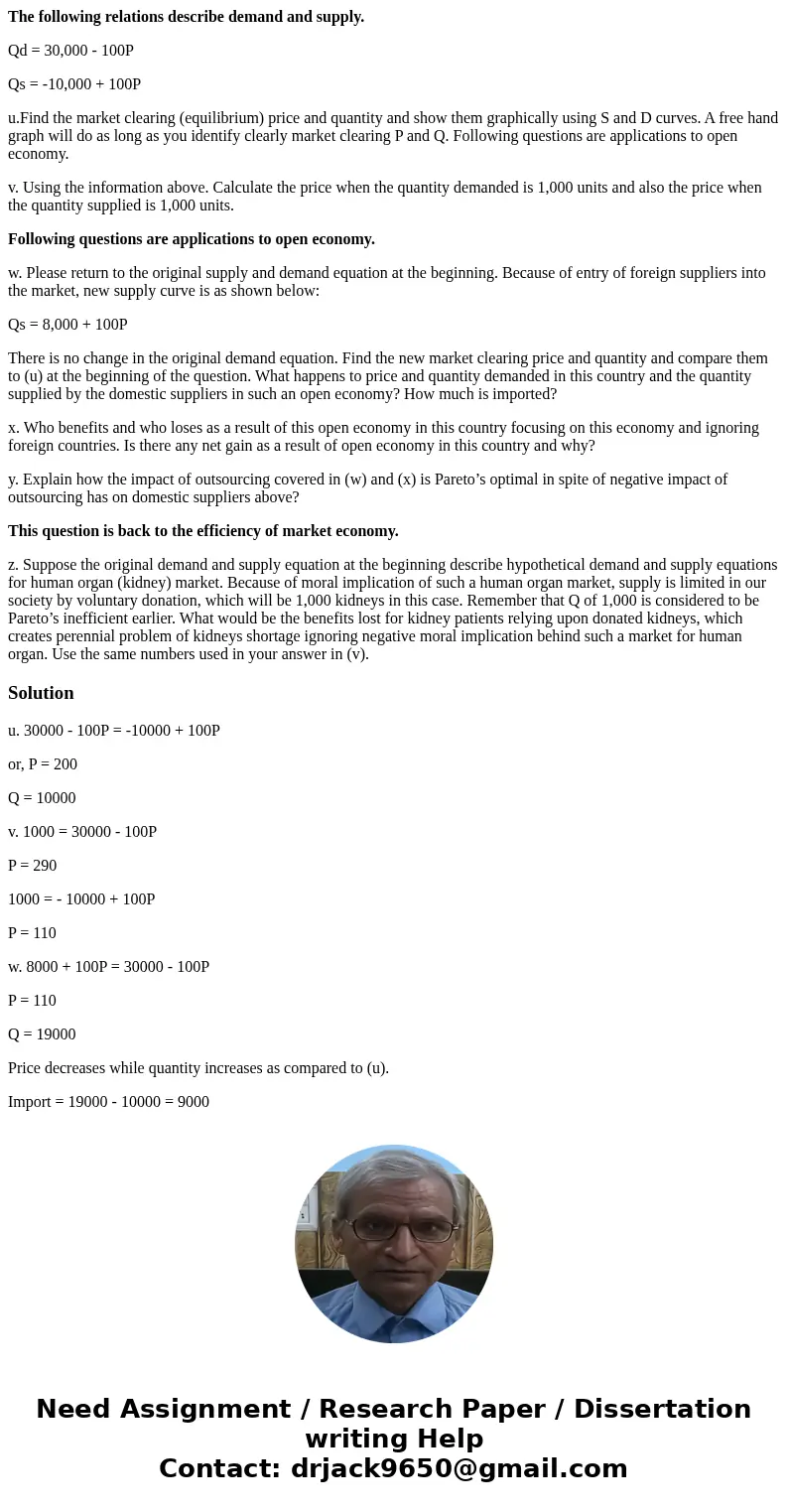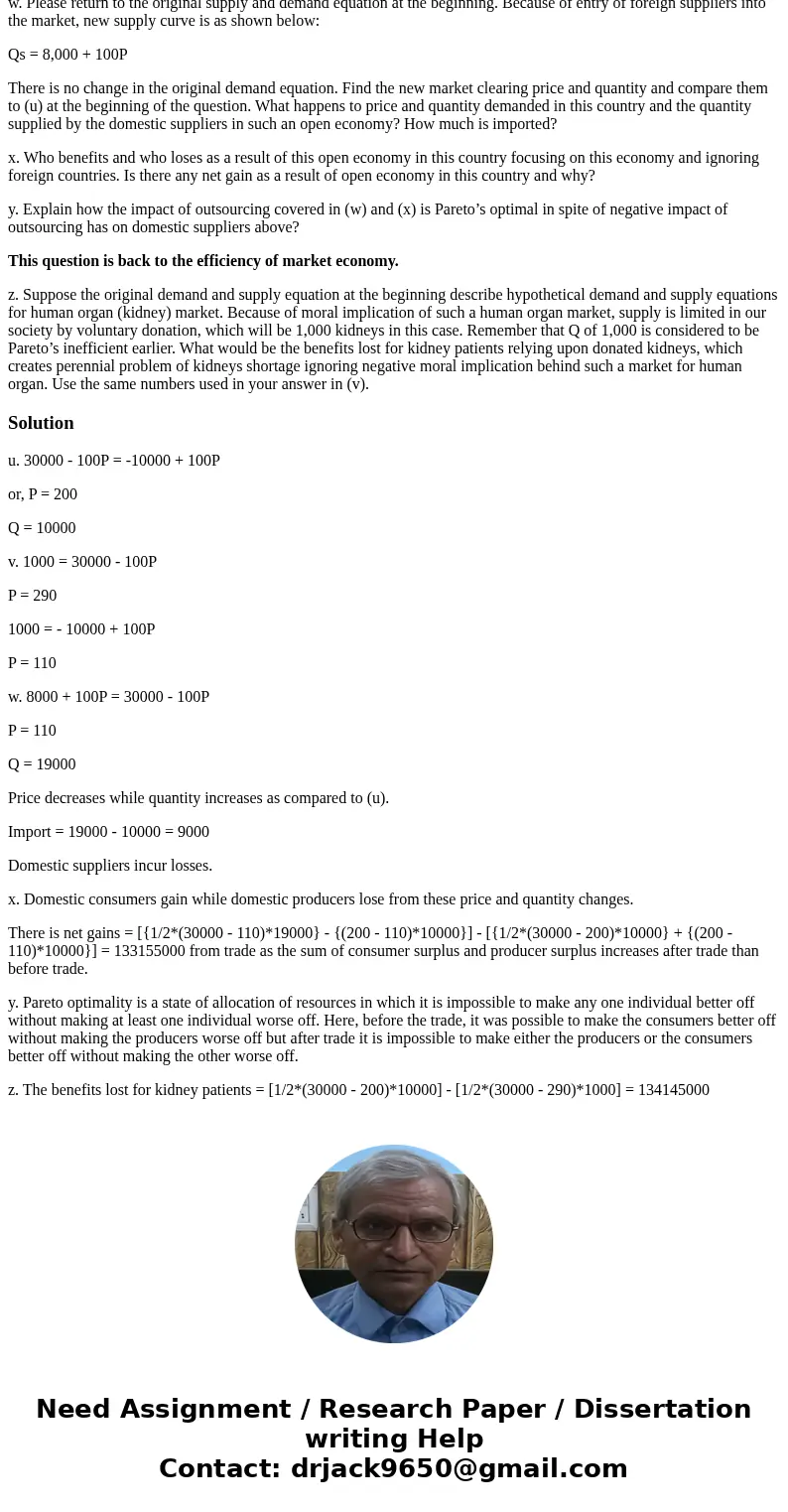The following relations describe demand and supply Qd 30000
The following relations describe demand and supply.
Qd = 30,000 - 100P
Qs = -10,000 + 100P
u.Find the market clearing (equilibrium) price and quantity and show them graphically using S and D curves. A free hand graph will do as long as you identify clearly market clearing P and Q. Following questions are applications to open economy.
v. Using the information above. Calculate the price when the quantity demanded is 1,000 units and also the price when the quantity supplied is 1,000 units.
Following questions are applications to open economy.
w. Please return to the original supply and demand equation at the beginning. Because of entry of foreign suppliers into the market, new supply curve is as shown below:
Qs = 8,000 + 100P
There is no change in the original demand equation. Find the new market clearing price and quantity and compare them to (u) at the beginning of the question. What happens to price and quantity demanded in this country and the quantity supplied by the domestic suppliers in such an open economy? How much is imported?
x. Who benefits and who loses as a result of this open economy in this country focusing on this economy and ignoring foreign countries. Is there any net gain as a result of open economy in this country and why?
y. Explain how the impact of outsourcing covered in (w) and (x) is Pareto’s optimal in spite of negative impact of outsourcing has on domestic suppliers above?
This question is back to the efficiency of market economy.
z. Suppose the original demand and supply equation at the beginning describe hypothetical demand and supply equations for human organ (kidney) market. Because of moral implication of such a human organ market, supply is limited in our society by voluntary donation, which will be 1,000 kidneys in this case. Remember that Q of 1,000 is considered to be Pareto’s inefficient earlier. What would be the benefits lost for kidney patients relying upon donated kidneys, which creates perennial problem of kidneys shortage ignoring negative moral implication behind such a market for human organ. Use the same numbers used in your answer in (v).
Solution
u. 30000 - 100P = -10000 + 100P
or, P = 200
Q = 10000
v. 1000 = 30000 - 100P
P = 290
1000 = - 10000 + 100P
P = 110
w. 8000 + 100P = 30000 - 100P
P = 110
Q = 19000
Price decreases while quantity increases as compared to (u).
Import = 19000 - 10000 = 9000
Domestic suppliers incur losses.
x. Domestic consumers gain while domestic producers lose from these price and quantity changes.
There is net gains = [{1/2*(30000 - 110)*19000} - {(200 - 110)*10000}] - [{1/2*(30000 - 200)*10000} + {(200 - 110)*10000}] = 133155000 from trade as the sum of consumer surplus and producer surplus increases after trade than before trade.
y. Pareto optimality is a state of allocation of resources in which it is impossible to make any one individual better off without making at least one individual worse off. Here, before the trade, it was possible to make the consumers better off without making the producers worse off but after trade it is impossible to make either the producers or the consumers better off without making the other worse off.
z. The benefits lost for kidney patients = [1/2*(30000 - 200)*10000] - [1/2*(30000 - 290)*1000] = 134145000


 Homework Sourse
Homework Sourse